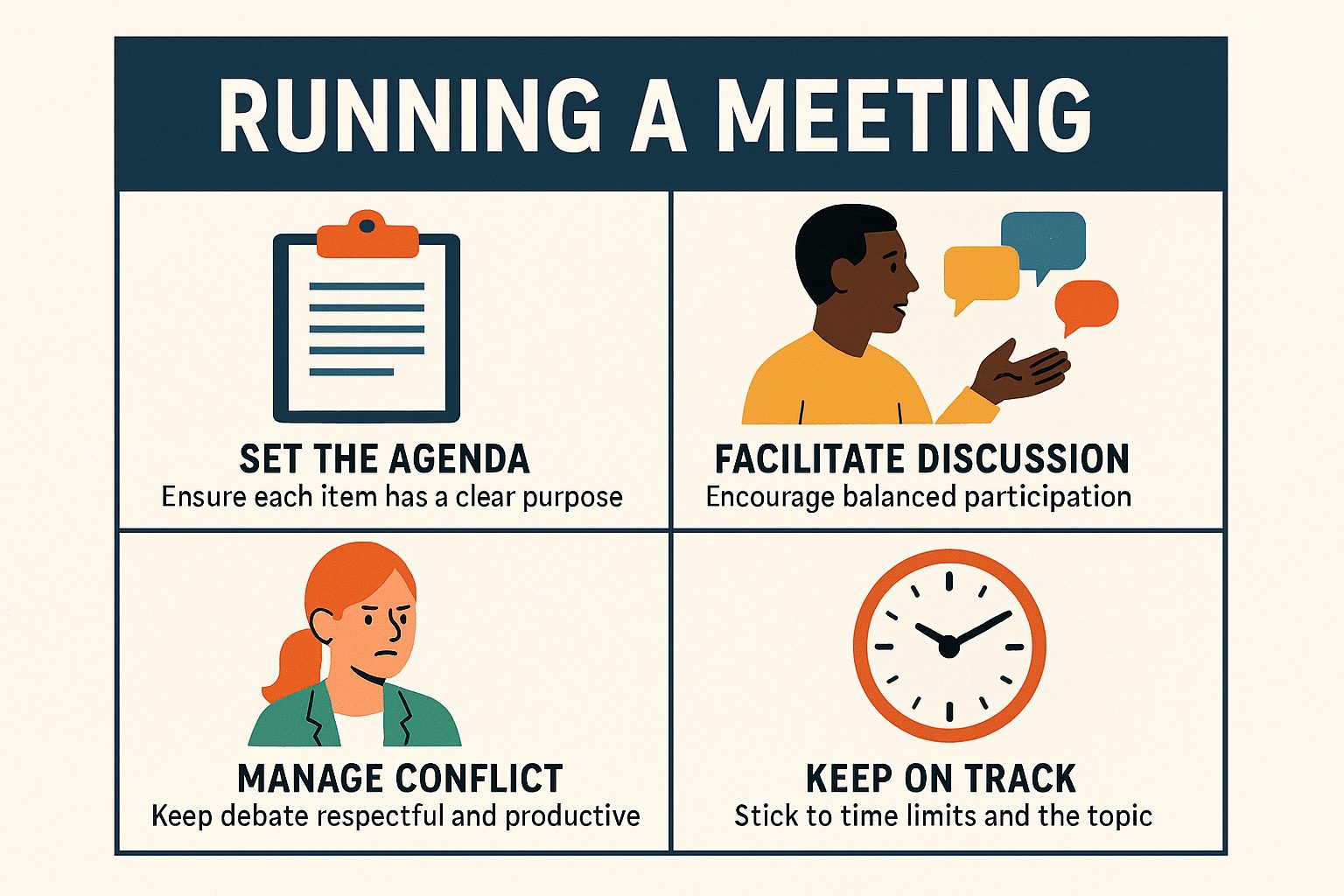Part 1 in a 9 part series
Introduction to the Chair
Every non-profit board has a chair. The role is written into bylaws, ideally enshrined in policy, and more or less assumed to be necessary for the board to function. But why? What is the actual purpose of the chair, and what should the person in this position be striving to do?
This first post kicks off a series on chairing. Over the next several blog posts, I’ll be exploring the practical side of being a board chair. Through my time chairing six boards and countless committees, reporting to boards and chairs as an executive director, and watching and working with exceptional chairs, I have seen a lot, and learned a lot. While each board is different, in terms of composition, structure, purpose, culture, etc., chairing effectively has far more in common across boards than different.
Who is the Chair
The chair is not simply a titleholder. They have essential responsibilities and more than anyone else, hold the key to the board’s success. Their success in the role is tied directly to the success of the board in a similar way to the Executive Director’s success being tied directly to the success of the organization. As part of being the chair, they take on many roles including:
- Facilitator
- Conflict manager
- Relationship builder
- Motivator
- Agenda setter
- Culture shaper
- Rule enforcer
- Mentor
- and Leader among others
But even as a rule enforcer and mentor, the role of the chair is not about being the boss of the board. While the chair clearly plays an essential leadership role, and have some added powers compared to others, when it comes down to making decisions, they have the same vote as every other board member. And in fact, the overarching purpose of the chair during a board meeting is to ensure everyone else around the table is able to have fulsome discussion, make informed decisions, and meet efficiently. Being a chair is really about others.
Strong chairs often share some key qualities that help them thrive in their role. They are both confident and humble, able to effectively run the meeting while recognizing their purpose of helping others have a good meeting. They are organized and creative in helping others be properly prepared for meetings and ensuring work gets done and decisions made. They are excellent listeners, good summarizes, patient, and direct. And they lead a group of strangers who make major decisions together. It’s not a role to take lightly.
The Chair’s Various Roles
The chair does a lot. Most of these responsibilities are relevant to every board chair of a non-profit:
Guardian of the Meeting –
Much of a chair’s work plays out in meetings. That is where boards exercise their authority, and the tone set by the chair is critical. That means the chair must work towards:
- Keeping the discussion on the agenda
- Encouraging every director to contribute
- Preventing any one voice from dominating
- Using rules when needed to restore balance
- Summarizing discussions so decisions are clear
Read more in Running Effective Meetings and Generating Engagement at Meetings
Partner to the Executive Director
Working with the ED and being a direct liaison between them and the board, is a key part of the chair’s job. The chair isn’t really the ED’s supervisor, but more of a link between the board as a whole and the ED as its only employee.
When there is an effective relationship between them, the chair ensures the ED feels both supported and accountable without being micromanaged. This balance is one of the most important, and often most difficult, aspects of the role.
Read more in Working with the ED as Chair
Builder of Culture
Culture matters. The famous quote suggests that it eats strategy for breakfast. It is in a group context, the norms, expectations, and ways of doing things around the board table and beyond. And chairs can impact this through preparation, leading by example, and being deliberate about setting norms and expectations.
A good chair sets the tone and holds the board to the same standard.
Read more in The Chair and Board Culture
Problem Solver
The chair guides the board through challenges by focusing on solutions rather than blame. A chair in this role keeps discussions constructive, reframes issues so they can be better understood addressed, and ensures the board responds to crises with clear decisions and next steps. They help directors see options, weigh risks, and choose a path forward under pressure. But this can be easier said than done.
Read more in Chairing in Crisis Situations and Handling Conflict Around the Board Table
The Working Board
In an organization with no or limited staff, the chair often balances two hats, that of governance leader and volunteer coordinator. This chair has to keep the board focused on oversight while also helping organize and direct the board’s operational work. This means clarifying when the board is acting as governors versus as “doers,” ensuring governance tasks don’t get lost in day-to-day activity, and making sure work is divided fairly among directors.
Read more in Chairing the Working Board
Preparing Others
Finally, the purpose of the chair is not just about today’s meeting or this year’s agenda, they also need to work towards the long-term health of the board. That includes succession planning for the role itself. Chairs should see part of their job as preparing others to step into leadership. That can mean a lot things including mentorship and including the vice-chair in various tasks.
Ultimately a chair should always want to leave the board stronger than they found it and ensure those after them can do the same.
Read more in Preparing your Exit as Chair
The Series Ahead
This series will build from here and cover eight key topic areas that every board chair should consider:
- Running Effective Meetings
- Generating Engagement at Meetings
- Working with the ED as Chair
- Handling Conflict Around the Board Table
- Chairing in Crisis Situations
- The Chair and Board Culture
- Chairing the Working Board
- Preparing your Exit as Chair
Each post will focus on the practical realities of the role, grounded in stories from my work with boards of all shapes and sizes. Hopefully this series will offer some helpful insights and practical tools that you can use as a new or seasoned board chair. And remember, the purpose of the chair is not about power or prestige, it’s about enabling the board to do its work better. This small point is the most important lesson to learn and will be the guiding principle throughout this series.


